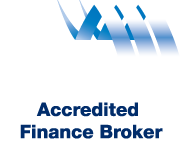Loan to Value Ratio
Whether you are a medical or dental practitioner or an investor looking to build their business/property portfolio; lenders will say that they will lend you a percentage of an asset. This is known as Loan to Value Ratio (“LVR”)).
Say you’re about to buy a dental practice for $1,000,000
Of the $1,000,000 purchase price, let’s assume that it’s made up of $600,000 Goodwill; $400,000 Fixtures and Fittings.
Let’s also assume that the dental practice has a market value matching its purchase price and that you will need to borrow the funds from a lender.
LVR
LVR is the proportion of money you intend to borrow compared to the value of the property or business.
You may be familiar with the term LVR as in the case of most home loans, majority of credit providers usually lending 80% of the value of the property.
But what does it mean for medical or dental practice lending?
Medical or Dental Practice purchase finance for a credit provider is a specialised security and is often a complex lending solution. However, given the expected lower risk, some lenders will consider up to 100% of the agreed purchase price. Be aware that some lenders may require a valuation by their preferred panel valuer and reduce the LVR, if there are reasons acceptable to the lender.
Where some providers lend up to 100% of the market value others will lend 90% of just the goodwill portion. It is also important to mention that some lenders will also lend up to 90% of a property (home and investment loans) to medical professionals without any Lenders Mortgage Insurance (“LMI”).
Using the example above, let’s see how a LVR set at 90% of market value compares to 100% of goodwill.
90% LVR against Market Value
$1,000,000 x 90% = $900,000
Therefore, the lender will lend $900,000 towards the purchase using the practice as security. Balance $100,000 will need to be covered by the purchaser with their own cash or equity of a property they hold.
100% LVR against Goodwill
$1,000,000 x 100% = $1,000,000
Therefore, the provider will lend the full amount of the purchase price however, it is prudent to check if there is a variation of interest rates if a lower LVR is applied.
Lenders will advise from the outset that LVR will be based on the lower of Market Value assessed by their panel valuer or Purchase Price.
LVR policy changes
It is well known that lenders update and change their lending policies regularly. They usually determine and set their policies according to their current risk appetite and return on investment as outlined in their responsibility to their shareholders.
What this means is that one year they may feel comfortable lending 100% LVR based on the market value of a goodwill of a practice and the next, they wish to reduce their risk by only lending 90% of its goodwill.
Summary
- Check which LVR policy your current or future credit provider is using to see how it fits with your own situation.
- Knowing when your existing loan is up for review or about to expire is key, so you can plan ahead.
- Seek specialist advice to navigate the types of LVRs on the market to see which one is right for you.
This article should be a guide to assist you to with more information on the LVR. In each example above, it has been assumed that all other requirements of the lender is satisfactory to the lender.
Feel free to contact us via
info@FinanceCircleGroup.com.au
The information on this website is general information only and is not intended to be a recommendation. We strongly recommend you seek advice from your financial adviser as to whether this information is appropriate to your needs, financial situation and investment objectives.


